What are the advantages and disadvantages of pine as a Christmas tree? We have complete information for you!
23. 5. 2024
What will you learn in this article?
- ⭐ Pine as a Christmas tree
- ⭐ How to choose the best Christmas tree for your home
- ⭐ Pine species
- ⭐ How to care for a pine tree in a pot indoors
- ⭐ How to care for a pine tree outdoors
- ⭐ How to care for a Christmas tree in a stand
- ⭐ Advantages and disadvantages of pine in the interior
- ⭐ Advantages and disadvantages of pine in the exterior
Have you decided your Christmas tree will be a pine tree this year?
But are you still wondering if you made the right decision?
Find out if pine is a suitable tree for the interior, how long it will last for you, and what to do with it after Christmas!
Pine as a Christmas tree
You can find many pine trees worldwide, but only some are suitable as Christmas trees.
We bring you an overview of the most common pine trees, among the most popular trees for Christmas.
White pine
This tree grows in bundles of needles. It has a blue-green shade with pointed tips and flexible branches that give off almost no aroma. If you plan to use it as a Christmas tree, avoid using heavy or oversized ornaments, as its branches are not very strong.
If you want this type of pine for outdoor use, this is an excellent choice because it is one of the largest pines – growing up to 210 feet tall.
White pine can live up to 400 years, so your future generations can enjoy this tree, especially if the tree is properly pruned.
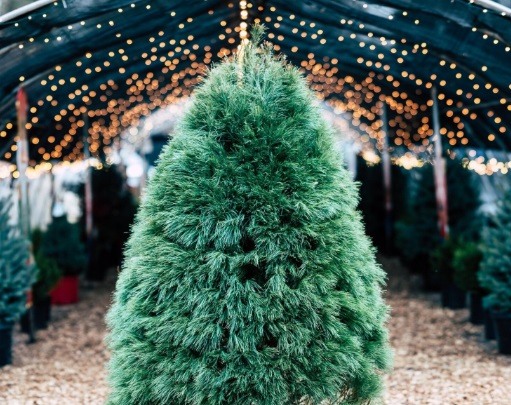
Scots pine
Scots pine is another excellent choice as a Christmas tree. Compared to white pine, it has dark green needles and stronger branches. This makes it the ideal tree if you want to splurge on Christmas lights and decorations.
Scots pines are not as tall as White pines as they can only grow up to 90 feet tall.
Their needles change color from blue-green to a darker green in winter. It also grows in bunches of two.
Scots pine is the best choice if you want a pine with long-lasting needles. This means you don’t have to clean up as much after the Christmas holidays.
Regarding aroma, Scots pine has a medium scent – it scents the home but doesn’t irritate in any way.
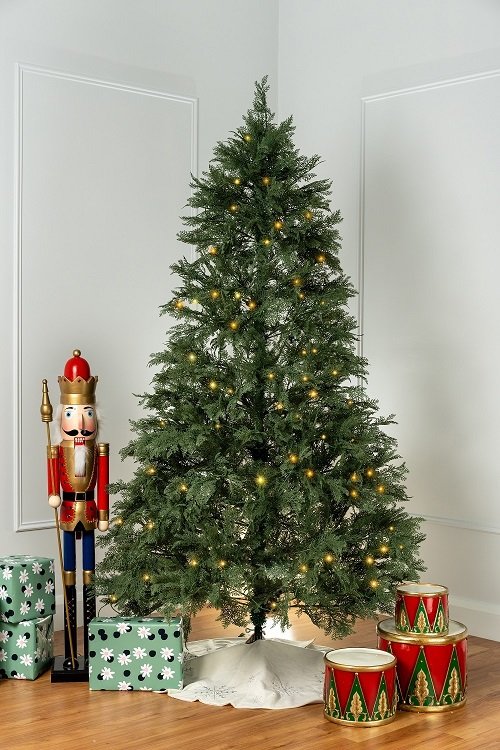
Virginia pine
This pine is easily identified because it has short, twisted needles that grow in pairs. This pine has short branches, but the needles on them are dense. This makes it sensitive to clipping.
Among the trees on this list, the Virginia pine is the smallest and doesn’t smell much. This is because it is a small to medium-sized tree that can only grow to a height of 60 feet.
If you have limited space at home, this tree may be the right choice for you.
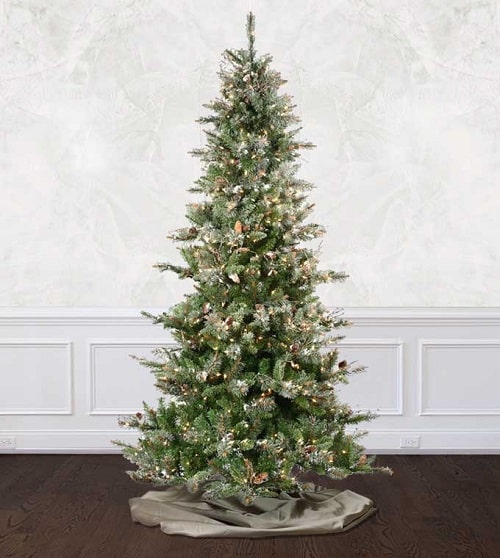
| Name of the tree | The appearance of needles | The power of the branches | Scent | Height |
| White pine | blue-green pointed needles | flexible, not too strong branches | almost no aroma | up to 210 feet |
| Scots pine | dark green needles | solid branches | medium aroma | up to 95 feet |
| Virginia pine | green twisted needles | short branches sensitive to pruning | mild aroma | up to 60 feet |
Have you decided that an artificial tree is not suitable for you? Then check out more information to help you choose the best live Christmas tree!
How to choose the best Christmas tree for your home
Here are two great tips to help you know you’ve invested in the best tree for your home.
Be aware of the parameters of your home.
If you want to get the right indoor Christmas tree, you need to ensure a gap of about fifteen centimeters between the top of the tree and the ceiling. If the tree were too tall, its tip would begin to bend under the weight of the ceiling, which does not look good.
Always remember that the height of the stand must be added to the height of the tree unless you have the tree planted in a pot.
Consider the shape of the tree.
Look at the tree from all possible angles when buying. Move away at least a few meters away to get a good view and see it in space. Make sure the branches are symmetrical and that no branch is sticking out anywhere you don’t want it to.
Also, make sure the tree trunk is as straight as possible.
Pine species
There are about 110 pine species, but they are all similar in their massive long needles and massive cones.
Pine trees grow up to 210 feet, and some species can live up to 1000 years.
These trees have a straight trunk, and their crown almost reaches the ground. Pine roots grow deep into the ground, making these trees resistant to wind and subsequent uprooting.
| A kind of pine | The appearance of a tree | Maximal height | A type of needle | Type of cones | Habitat |
| Scots pine | 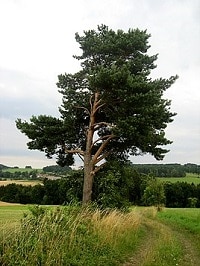 | 120 feet | Needles are 10-16 inches long, straight or longitudinally twisted, pointed, and stiff; they fall off after 2-3 years | Cones are conically ovoid, 9-20 inches long | Europe, North Asia, Europe (native species) |
| Weymouth pine | 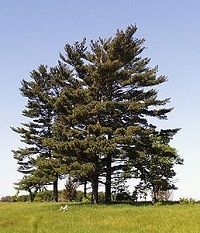 | 180 – 240 feet | The needles are very thin and soft, 12 – 24 inches long | Cones are ovoid, sessile, and about 8 cm in size | Southern Europe, the Alps |
| Black pine | 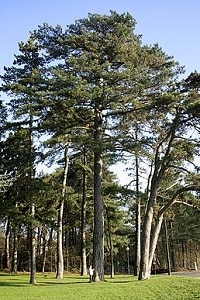 | 120 feet | The needles are pointed and 16 – 30 inches long | Cones are ovoid and 4-8 inches in size | Southern Europe and the Mediterranean, the Alps, Asia Minor, and northern Africa |
| Limb pine | 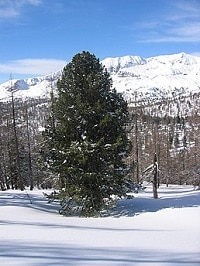 | 50 – 90 feet | The needles are 12 – 24 inches cm long, densely dense | Cones are symmetrical and about 10 inches in size | the entire Alps, Carpathians (from Slovakia to Romania) |
| Kneeling pine | 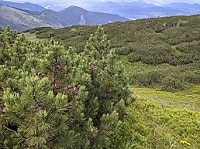 | 3 – 6 feet | The needles are 6-16 inches cm long, sickle-shaped, dense | Cones are symmetrical and ovoid-conical | Alps, Northern and Central Dinarides, Carpathians, Northern Balkans, Jura Mountains, Vosges, Šumava, Jizera Mountains, Tatras, Giant Mountains, Central Italy |
| Bishop pine | 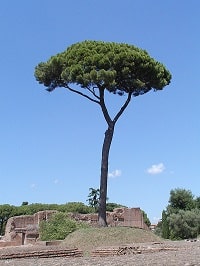 | 90 feet | The needles are pointed and 20 – 40 inches long | Cones are ovoid and 4-8 nches in size | Spain, Italy, Portugal, North Africa |
| Siberian Dwarf pine | 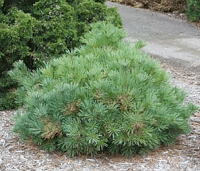 | 6-9 feet | The needles are pointed and 20 – 40 inches long | Cones are ovoid and 6 – 8 inches in size | Far East, Eastern Siberia, north-east of Mongolia, north-east of China, northern Japan and Korea |
| Swiss pine | 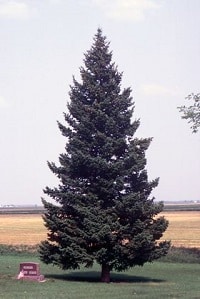 | 180 feet | The needles are soft and flattened, 4-8 inches long | Cones are ovoid and 5-10 inches in size | North America, Asia |
How to care for a pine tree in a pot indoors
Growing a pine tree indoors is much easier than you might have thought!
Still, there are some bare pine tree growing facts to understand in order to maintain a thriving tree indoors.
Tree selection
The most crucial factor to consider is the health of the tree. Look for trees with lots of green and little or no brown tips.
Try to find a tree that fits the place you have chosen for it at home. Remember that the bigger the tree, the more work it will be to maintain.
Pines are relatively easy to care for but will require a bit of pruning each year.
Almost all pine species can be grown indoors, although some species are more popular than others.
The most common indoor pine species include:
- Virginia pine
- Sugar pine
- Long-lived pine
- Ponderosa pine
- Mountain pine
- Norfolk pine
- Weymouth pine
- Stone pine
- White pine (eastern and western)
- Red pine
- Prickly pine
Planting a pine tree in a flower pot
Similar articles
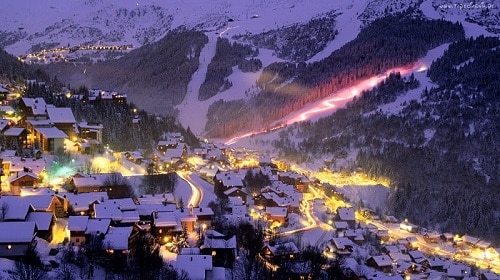
Christmas in the Mountains: Where to Go? We Have Great Tips for You! Get Inspired!

Worst Christmas Gifts to Avoid: A Survival Guide for Holiday Shopping

Where to Go to the Seaside for Christmas This Year? We Have Great Tips for You
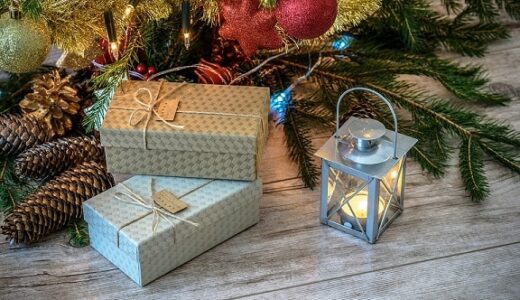
Creative Wrapping: Unique Ideas for Gift Presentation Beyond the Holidays
Pines don’t want the same fluffy soil as your other houseplants. Pines prefer sandy, fast-draining soil that is constantly moist.
Bonsai soil mixes work well for these trees.
Follow the steps below to place a bet.
- Begin potting by placing 4-8 inches of gravel or stones in the bottom of the sapling’s pot. Next, add enough soil mixture to cover the tops of the stones.
- Then, place the tree’s root ball directly in the center of the bottom of the pot. Spread the roots as much as possible in all directions (non-violently) and cover them with soil.
- Gently but firmly press the soil down onto the roots and add new layers until they are covered by several inches.
- Fill the remaining container with the soil mixture, leaving only the top 8-10 inches empty.
- If you have mulch or wood chips, add 10-16 inches to the top of the container, and you’re done.
Transplanting
Transplanting indoor pines is best done in the spring when the buds are not yet growing. Transplanting several months later, during late summer or early fall, is another popular option.
Indoor pines benefit from repotting every 12-18 months.
To transplant a pine tree, follow the same procedure described above for planting a pine tree.
You can also relieve the tree when repotting by submerging its root ball in water at room temperature and letting it sit there for 15-30 minutes between removal and repotting.
Watering and fertilizing indoor pine
Pine trees like a small sip daily, but just enough to keep them moist.
These trees can last up to two weeks without watering. However, letting the soil dry out between waterings is not recommended.
In terms of fertilization, pine trees don’t need much. You can fertilize them every year when transplanting, or you can give them a liquid fertilizer every few months that will benefit them.
How to replace natural conditions
Indoors, ensure the pine gets at least 8-10 hours of indirect sunlight from windows and lights.
Also, make sure that its soil never dries out completely. You restore what it would have received from the morning dew by giving it a little water every day.
Pruning pine trees
Pines are one of the few trees that do not need to be pruned often. Usually, damaged or dying pine tree areas are the only parts that need to be trimmed.
But if you want a denser growth of branches, pruning is beneficial. Thanks to this, you may be able to create a lush little tree.
If you decide to trim, doing it in early spring and autumn is recommended.
If your pine is already too tall and you want to shorten it, it is recommended to trim it by starting at the central branch. Hold its tip and trim it to the desired height. Then, continue down and cut off the tips of the branches that you think should be shorter to give the tree the desired shape.
How long can you leave a pine tree inside?
Pines in pots benefit significantly from being moved outside, at least occasionally. They can survive practically forever in a house, but fresh air and full sunlight will benefit them.
However, the longer the pine stays indoors, the more it adapts to its environment.
If you take good care of it, water it, fertilize it, give it enough light, and keep it the right size, it should last until the end of its life.
Do you like the idea of a Christmas tree in a pot? Then, read about other ways to care for it and where to buy it.
See how you can plant and grow your tree.
How to care for a pine tree outdoors
Christmas is over, and would you like to plant the indoor pine somewhere outside? See how to proceed.
The best time to transplant a pine outside is when the temperature is not likely to jump too high or drop too low.
Late August, September, and October are the most recommended times of the year when this task can be done.
Choose the right place for planting.
Before planting a pine tree, it is essential to consider the climate, soil type, and size of the tree. Pines require well-drained soil and plenty of sunlight. In addition, they can grow to quite large sizes, so choosing a location that suits their size is essential. Before deciding, it is also important to consider the possible disadvantages of pine trees, such as dropping needles and attracting pests.
It is recommended to plant pines further from the house. A tree’s needles may look beautiful, but they also shed and can clog gutters. Pine needles and fallen pine cones can also clog and damage the mower when tending to the garden.
Do not let the pine tree dry out
If not correctly cared for, pine trees can become a fire hazard, as needles and dry branches can easily catch fire.
To prevent ignition, watering the pines well and removing dry or dead branches is necessary. You should also not light a fire near them.
How to care for a Christmas tree in a stand
If you only bought a pine tree for Christmas and don’t plan to plant it in the garden, you put it in a stand. Such a tree needs special care to last you as long as possible. See how to do it!
Provide enough moisture for your tree to stay fresh and last up to 6 weeks. When you bring the sapling home, cut off 0.5-1 cm from the bottom of the trunk. This is because the stump starts to dry out when the tree is cut on the farm. The resin can eventually clog the pores that absorb water.
When finished, place it in a stand that holds the water. Do not use additives, such as aspirin or bleach, to help preserve the tree. You only need tap water. Make sure that the stand never dries out.
If you have chosen to buy a live pine tree or another tree, but the flowerpots do not mean anything to you, do not forget to choose a suitable Christmas tree stand, which will guarantee that yours will not fall over and will stand out beautifully in your home.
Advantages and disadvantages of pine in the interior
| Pros | Cons |
| long lasting, needle resistant | the needles are very pointed, and the sting can be painful |
| strong branches that will hold even heavier ornaments | may cause allergy |
| beautiful, distinct fragrance | releases sap that can damage clothing and other surfaces |
| it can last up to 6 weeks or more in water | the strong smell may bother more sensitive people |
Advantages and disadvantages of pine in the exterior
| Pros | Cons |
| plenty of shade | fallen needles are more difficult to remove than other conifers |
| a home for animals | fallen pine needles can clog the gutters of a house |
| absorbs carbon dioxide from the air, helping to reduce greenhouse gas emissions | fallen pine cones can cause damage to the mower when mowing the lawn |
| prevents soil erosion improves soil water quality | attracts pests (e.g. pine beetles) |
If you are considering getting a pine tree as a Christmas tree, overall, it can be said that it can have a lot of advantages. Not only will pine make your interior smell beautiful, but if you have it in a pot over Christmas, you can plant it in your garden after the holidays, for example.
The pine tree will make you happy not only during the Christmas holidays but also in other seasons, when it provides much-needed shade in the summer and, among other positives, beautifies the garden.

